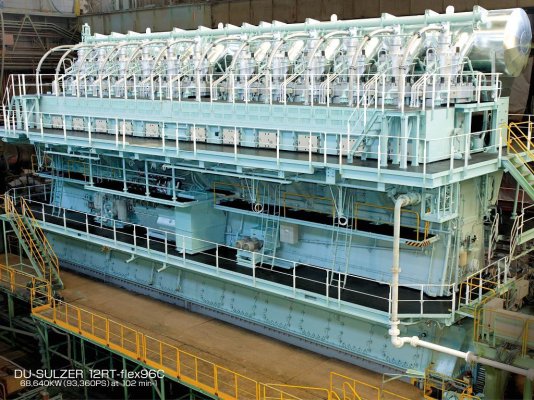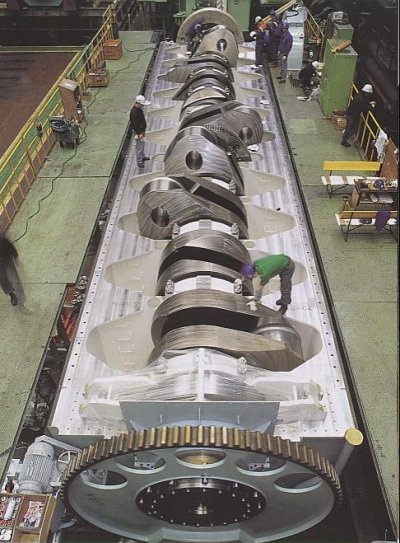The company I work for recently flew an unmanned turbine-powered aircraft--- and not a tiny one--- in Spain using a fuel made entirely from algae. Is there a future for this fuel? Maybe. Can it help reduce our dependence on fossil fuels? Maybe. Is it going to be used in commercial jet aircraft? Maybe. But don't look for it in the tanks of the 777 pulled up at your boarding gate anytime soon.
I don't doubt that diesel-electric is a viable marine propulsion system. But as I said earlier, there are a lot of inter-related elements to making it work, one of which is boat design and another of which is price.
Until a system can be developed and marketed for a price that a large segment of the boating population can afford, it will remain an "exotic" side-product, something that can go into a multi-million dollar Nordhavn but not into Average Joe's CHB.
I have no quarrel with the technology. If we can fly a plane on algae I see no reason why a small boat can't be run efficiently on diesel-electric power. But as with all these things, the technology's the easy part. It's the marketability that's the hard part. The components have to be produced using processes and in volumes that make it affordable. Like our algae fuel, the efficiency of the product is meaningless if it is offset by the cost to produce it, or transport it, or store it.
I have seen lots of stuff about how diesel electric systems can work in smaller boats. I've seen lots of discussions including the above post about the efficiencies, real or theoretical, these systems can bring. I have no argument against what's being said as it's not my area of expertise (or even interest).
But what I haven't seen is what it's going to cost.
The High Definition video cameras we use in our work cost approximately $100,000 apiece. Why the super high price? The market for these things is very small. And the development costs were very high. Divide the development and production costs (and profit) by the size of the market and you get a $100,000 price tag.
I think diesel electric propulsion, if it really does offer the efficiencies its proponents claim, is a fine idea. And boats like the big Nordhavn, assuming they work as advertised, will be one more step toward making this kind of propulsion more practical. But until the big production companies get on board--- Bayliner/Meridian SeaRay, Grand Banks, Nordic Tug, etc AND it is accepted by a sufficiently large segment of the buying public which is what it will take to get the big manufacturers on board, diesel-electric propulsion for smaller boats will remain an exotic "experiment."
And one other thing---- so far all the discussions I've seen about this propulsion system have been focused on moving boats very economically, which you can certainly do with small diesels powering generators. But a HUGE segment of the boat-buying population has zero interest in going slow. They want 20, 25, 30 knots. I suspect that SeaRay, for example, isn't going to be too interested in diesel-electric power unless it can be shown that they can produce the kind of fast boats their customers want with a diesel-electric drive system that's cheaper to operate, costs the same or less than a conventional diesel drive, and is as or more reliable than a conventional diesel system.
And they aren't going to re-tool their product line based on a few one-off examples of a lab-built system custom installed in a demo boat. They're going to want to see a production line delivering the volume of proven, warranteeable (is that a word?) drive systems that they can bolt into their boats.
Can it be done? Maybe. But like our algae aviation fuel, don't look for it in the showroom anytime soon.
Eric-- I have no quarrel with new systems like this being discussed.* I just don't have a lot or patience when these kinds of things start being touted as though they're not only going to change the world, but they're going to change it tomorrow at 9.00 am.* If people didn't think of new ways of doing things and then trying them, we'd all still be living in caves.* My issue is that more and more people seem to think everything is like CSI, where all the solutions should be found in an hour using technology that doesn't actually exist yet.* I guess it the half of me that's French, but I tend to very pessimistic when I start hearing people promising something for nothing.
As to diesel-electric power in my boat, no bloody way.* I love engines, I love controlling them, and I love hearing them.* No way in hell I'm going to give up my two roaring diesels for some pansy little constant-speed* generator and silent propulsion motor.* That's like offering a Harley owner a silent motorcycle.* If I wanted that sort of limp-wristed power, I'd get a damn sailboat
-- Edited by Marin at 01:40, 2007-12-29

